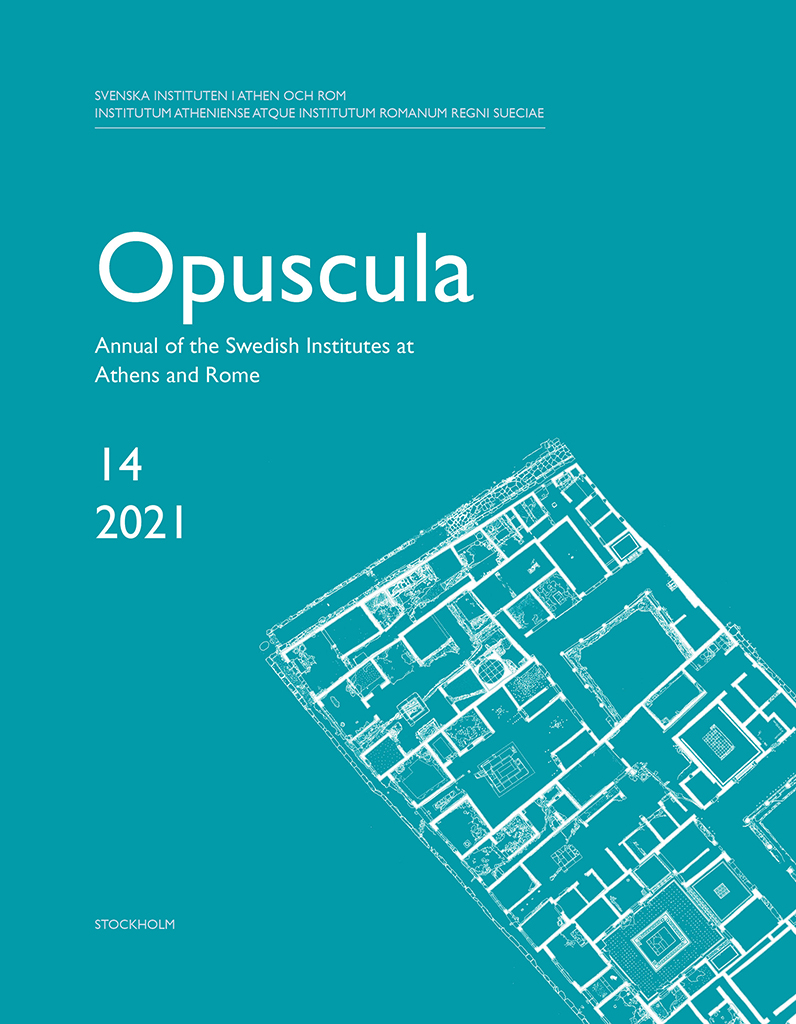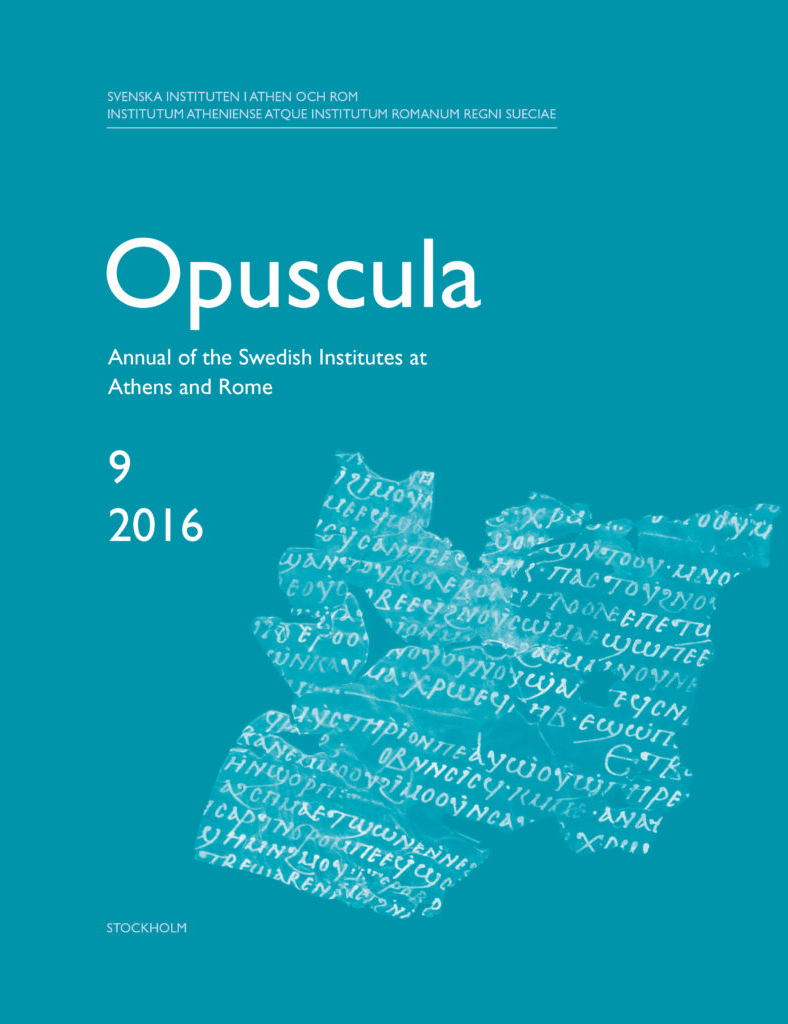Opuscula is published by the Swedish Institutes at Athens and Rome, with the aid of a grant from the Swedish Research Council. Distributed by Eddy.se AB. View journal at ERIH PLUS. All content available with open access. Gourimadi Archaeological Project. The results from the first excavation season (2018) of a prehistoric site in the Karystia, southern Euboea By Žarko Tankosić (University of Bergen, Norway), Fanis Mavridis (Greek Ministry of Culture and Sports, Greece), Paschalis Zafeiriadis (Norwegian Institute at Athens, Greece) & Aikaterini Psoma (University of Illinois at Chicago, United States of America) Abstract The Norwegian Institute at Athens received a permit from the Greek Ministry of Culture and Sports in 2018 to conduct a five-year excavation project at the site of Gourimadi in southern Euboea. The first field season, conducted in June 2018, lasted for four weeks during which two trenches were opened at the site and partially excavated by a Norwegian-Greek team of researchers and students. The aim of the project is to understand the transition from the Neolithic to the Bronze Age in this part of the Aegean in the light of emerging regional maritime interaction networks and lasting settlement of the Cycladic islands. In addition, data collected…
Opuscula is published by the Swedish Institutes at Athens and Rome, with the aid of a grant from the Swedish Research Council. Distributed by Eddy.se AB. View journal at ERIH PLUS. All content available with open access. Home, refuse, and reuse during the Early Helladic III to the Middle Helladic I transitional period. A social zooarchaeological study of the Asine bothroi By Stella Macheridis Abstract The practice of digging, using, and filling large pits, cut into the ground and sometimes lined with clay, was extensive from the Early Helladic III to the Middle Helladic Period I (c. 2,200–1,900 BC) in large parts of the Aegean area. This particular type of feature is called bothros and has been reported since the early 20th century from many settlements, mainly from the Greek mainland. Although the bothroi are numerous in the archaeological record, few studies of them have been made. During the excavations at Asine, a prehistoric coastal settlement in the Argolid, a number of bothroi were identified. This paper is a contribution to the study of bothroi, and in particular of the faunal remains found within these features. I propose that the bothros was an important part of the domestic organization at…
Opuscula is published by the Swedish Institutes at Athens and Rome, with the aid of a grant from the Swedish Research Council. Distributed by Eddy.se AB. View journal at ERIH PLUS. All content available with open access. A note on domestic vs communal grain storage in the Early Helladic period By Monica Nilsson Abstract This paper sets out to propose an alternative model of economic management at settlements of Early Helladic I–II date, where evidence of socioeconomic hierarchies is not prominent in the archaeological material. It is suggested here that the remains of certain original structures within the boundaries of settlements were once granaries which served the whole community. If this reading of the material is accepted, then communal storage seems to have supplemented domestic storage or constituted the sole method of grain keeping at a number of settlements during the initial stages of the EH period. The practice was then abandoned and, with one exception, after the EH II–III break there is instead a strong case for domestic storage only. A potential EH I–II communal management of basic food supplies thus carries wider implications for the interpretation of the general management of settlements. Bibliographical information Monica Nilsson, ‘A note…
Opuscula is published by the Swedish Institutes at Athens and Rome, with the aid of a grant from the Swedish Research Council. Distributed by Eddy.se AB. View journal at ERIH PLUS. All content available with open access. Dairy Queen. Churns and milk products in the Aegean Bronze Age By Sarah P. Morris Abstract This article assembles examples of an unusual vessel found in domestic contexts of the Early Bronze Age around the Aegean and in the Eastern Mediterranean. Identified as a “barrel vessel” by the excavators of Troy, Lesbos (Thermi), Lemnos (Poliochni), and various sites in the Chalkidike, the shape finds its best parallels in containers identified as churns in the Chalcolithic Levant, and related vessels from the Eneolithic Balkans. Levantine parallels also exist in miniature form, as in the Aegean at Troy, Thermi, and Poliochni, and appear as part of votive figures in the Near East. My interpretation of their use and development will consider how they compare to similar shapes in the archaeological record, especially in Aegean prehistory, and what possible transregional relationships they may express along with their specific function as household processing vessels for dairy products during the third millennium BC. Bibliographical information Sarah P. Morris,…



